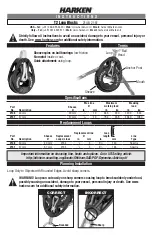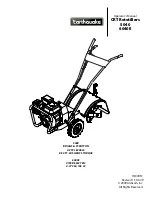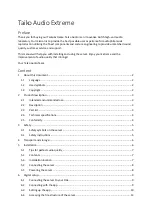
WavePro 7Zi
453
WP700Zi-OM-E-RevA
Noise Analysis
Disk noise parameters enable parameter measurements of media signal-to-noise (msnr), residual (electronics)
signal-to-noise (rsnr), and the ratio of media to residual signal-to-noise (m_to_r). The calculation of all three
parameters is based on the distribution of the averaged Viterbi input samples.
x
msnr
can be applied to any single-frequency, sector-based data pattern. The single-frequency data will be
sampled at the peaks (maxima), zero crossings, and troughs (minima). Any deviations from the ideal
sample points will be a result of noise. By performing multiple reads, random noise can be averaged away.
With this measurement, the repeating media noise level can be derived by msnr.
x
rsnr
can be applied to any single-frequency, sector-based data pattern. The single-frequency data will be
sampled at the peaks (maxima), zero-crossings, and troughs (minima). Any deviations from the ideal
sample points will be a result of noise. By performing multiple reads, random noise can be quantified. With
this measurement, the non-repeating residual (electronics) noise level can be derived by rsnr.
x
m_to_r
can be applied to any single-frequency, sector-based data pattern. The msnr is compared with the
rsnr. The resulting ratio indicates whether the signal is dominated by media noise if it is greater than 1.00,
or dominated by residual (electronics) noise if less than 1.00.
Measure’s
Drive Parameters
The buttons accessed via the "Measure" tab allow quick and convenient setup of the most common sets of
measurements made on a head signal. These include:
x
Track Average Amplitude (TAA), PW50
x
Amplitude Asymmetry, PW50+, PW50-, Baseline Separation, and TAA
x
Auto-Correlation Signal-to-Noise (ACSN)
x
Non-Linear Transition Shift (NLTS)
x
Jitter (period at level)
Setting Up Channel Emulation
Drive Analysis Setup
1. Press
the
Disk Drive Analysis (DDA)
button on the Quick Access toolbar. The disk drive dialogs appear.
2. Touch
the
Drive Analysis
tab
.
3. Touch
the
Channel Emulation
button
. The Channel Emulation setup checkboxes, buttons,
and data entry fields appear.
4. Touch
inside
the
Head Signal
field and select a signal source from the pop-up menu. The choices
comprise channel inputs C1-C4, math traces F1-F8, memories M1-M4, or Reference. See
Channel
Emulation with Reference
and
Channel Emulation without Reference
for guidelines on using a Reference.
5. Touch
the
Trace On
checkbox to turn the Head Signal on.
6. Touch
inside
the
Read Gate
field and select a source from the pop-up menu. The choices include
Ref
and
none
. Read GateIf the Read Gate signal is connected to a DDA channel and specified, it will be used to
determine the regions of the signal to be analyzed. Since the
VCO Synch
field is required for Channel
Emulation with Reference and is normally present in the head signal in every block just after Read Gate
Summary of Contents for DDA 7 Zi series
Page 1: ...Operator s Manual WavePro SDA and DDA 7 Zi Series Oscilloscopes ...
Page 2: ... L R R H HUD RU D D ...
Page 41: ...Operator s Manual WP700Zi OM E RevA 40 The detachable WavePro Zi front panel ...
Page 376: ...WavePro 7Zi 375 WP700Zi OM E RevA Absolute Offset Relative ...
Page 439: ...Operator s Manual WP700Zi OM E RevA 438 ...
Page 440: ...WavePro 7Zi 439 WP700Zi OM E RevA ...
Page 544: ...Thank you for purchasing a WavePro SDA or DDA 7 Zi Oscilloscope ...
















































